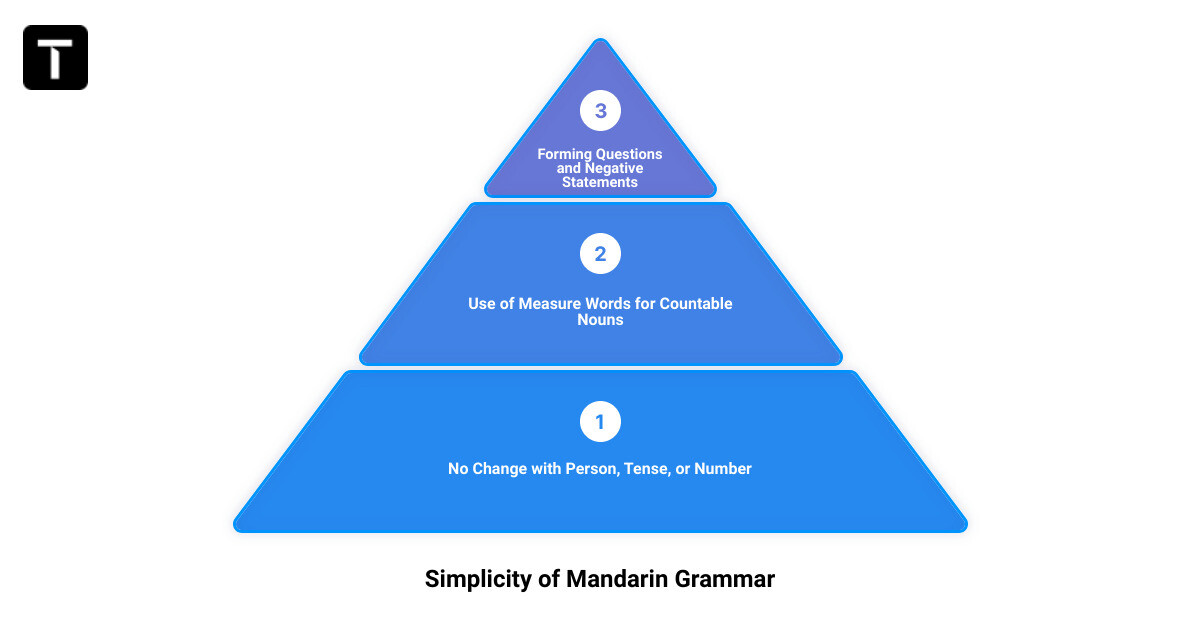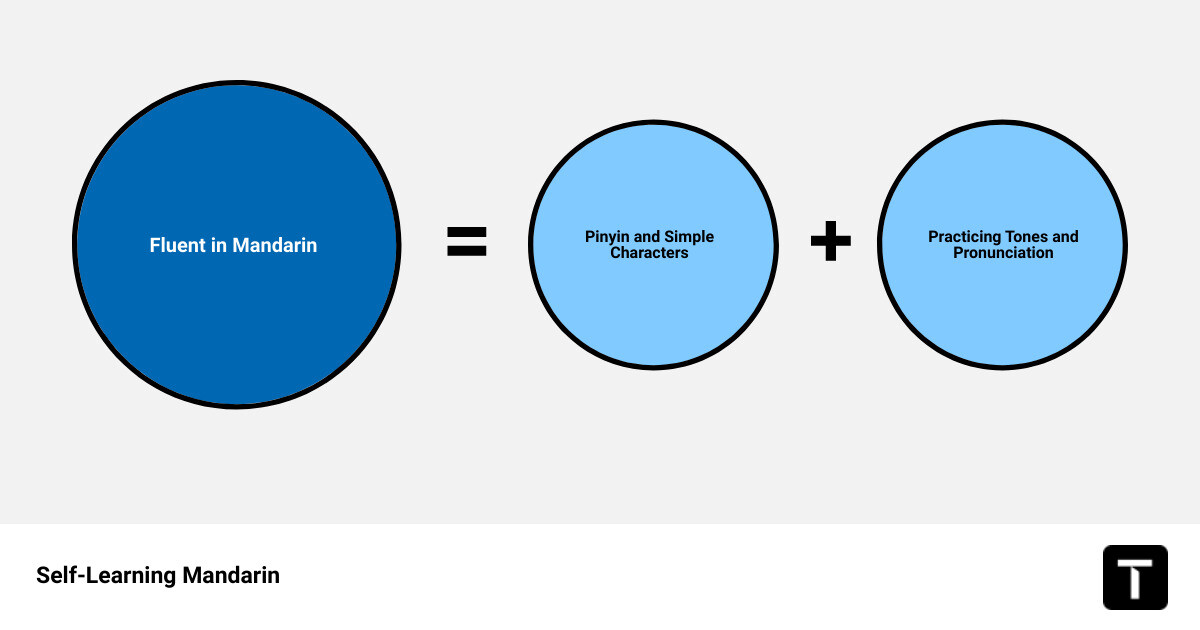Mastering Mandarin Chinese could be your passport to a multitude of personal and professional opportunities. If you've ever dreamt of conversing with locals while exploring the bustling markets of Beijing, or leading a business meeting with Chinese partners in Shanghai, learning Mandarin could be your key. In the words of Nelson Mandela, "If you talk to a man in a language he understands, that goes to his head. If you talk to him in his language, that goes to his heart." So, let's embark on this exciting linguistic journey together and unveil the secrets to learning Mandarin Chinese.
Mandarin is the most spoken language in the world, with approximately 1.28 billion speakers worldwide. Not only does learning Mandarin open doors to diverse interpersonal communications and networking opportunities, but it also enhances cultural understanding and contributes to personal growth. Proficiency in Mandarin is a highly sought-after skill in today's global business landscape, and it plays a pivotal role in sectors such as electronics, technology, and manufacturing.
More than just language acquisition, learning Mandarin also offers cognitive benefits, such as improved brain function and the development of cognitive skills. Therefore, learning Mandarin is not just about acquiring a new skill. It's an invitation to a deeper understanding of the world's most populous nation, its rich history, vibrant culture, and dynamic economy.
In this article, we will guide you through the basics of the Mandarin language, essential phrases and words for beginners, the simplicity of Mandarin grammar compared to other languages, and tips for self-learning Mandarin. Furthermore, we will also introduce you to Traverse, a comprehensive approach to learning Mandarin that partners with Mandarin Blueprint and utilizes Anki decks for effective and continued learning.
So, let's dive into the fascinating world of Mandarin and discover how you can master this beautiful language.

Understanding the Basics of Mandarin Chinese
Learning Mandarin Chinese is like assembling a beautiful puzzle. Each piece, whether it's a tonal sound, a Pinyin syllable, or a character, contributes to a rich and vibrant linguistic picture. Let's delve into these fundamental pieces and explore how they make Mandarin Chinese so unique and captivating.
The Role of Pinyin in Learning Mandarin
Pinyin is the bridge connecting you, an English speaker, to Mandarin Chinese. As the official phonetic system for transcribing Chinese characters into the Roman alphabet, it is indispensable in your Mandarin learning journey. It enables you to write down and pronounce Mandarin sounds. Unlike English, where the same spelling can have multiple pronunciations, Pinyin serves as a near-perfect guide to pronunciation in Chinese. By mastering Pinyin, you're laying a strong foundation for your Mandarin learning journey.
The Complexity of Chinese Characters and Radicals
Think of Mandarin as a language of symbols, where each character represents a word or a part of a word. Indeed, with thousands of characters, this aspect of Mandarin may seem daunting initially. However, these characters provide valuable insight into the meaning and pronunciation of words.
Moreover, Mandarin Chinese characters are not random drawings. They are built from smaller components called radicals, which often give a hint to the character's meaning. For instance, the character "休" (to rest) is composed of the radicals "人" (person) and "木" (tree), suggesting a person resting under a tree. Recognizing these radicals and their role will help you see patterns, making the memorization of characters an achievable task.
The Tonal Nature of Mandarin Chinese
One of the most distinctive features of Mandarin is its tonal nature. A single word can have different meanings based on the tone in which it is pronounced. There are four primary tones in Mandarin, and understanding these tones is vital for accurate pronunciation.
- The first tone is a high, flat tone. For instance, "mā".
- The second tone is a rising tone. For example, "má".
- The third tone is a dipping tone, going from middle to low to high, like "mǎ".
- The fourth tone rapidly goes from high to low, like "mà".
Mastering these tones might seem intimidating at first, but with consistent practice and a keen ear, you'll soon find yourself navigating the tonal waters of Mandarin with ease.
Understanding the basics of Mandarin Chinese is the first step towards proficiency in this fascinating language. Armed with the knowledge of Pinyin, Chinese characters, radicals, and tones, you are well on your way to mastering Mandarin.
Essential Mandarin Phrases and Words for Beginners
Learning Mandarin isn't just about understanding its structural components. It's also about getting a strong grasp of the most commonly used words and phrases. This will not only boost your conversational skills but also make your travel experience in Chinese-speaking regions more enjoyable. Let's delve into some essential Mandarin words and phrases that every beginner should learn.
Greetings and Basic Politeness in Mandarin
Politeness is a universal language, and Mandarin is no exception. Knowing how to greet someone or express gratitude can go a long way in establishing connections. Here are some basic Mandarin words to get you started:
- Hello: Nǐhǎo (Nee how)
- Thank you: Xièxiè (Shieh-shieh)
- You're welcome: Bù kèqì (Boo kuh-chi)
- Good morning: Zǎo (Zhow)
- Goodnight: Wǎn ān (One-un)
Common Mandarin Words and Their Meanings
Aside from greetings and expressions of politeness, knowing common Mandarin words can help you navigate day-to-day interactions. Some of these include:
- Yes: Shì (Sheh)
- No: Bù shì (Bu-sheh)
- Good: Hǎo (How)
- Bad: Bù hǎo (Boo-how)
- Today: Jīntiān (Jeen-tian)
- Tomorrow: Míngtiān (Meeng-tian)
- Yesterday: Zuótiān (Zwuh-tian)
- Goodbye: Zàijiàn (Zhai-jian)
Useful Mandarin Phrases for Travelers
Mandarin proficiency can also significantly enrich your travel experiences. Here are some phrases you'll find particularly useful when exploring Chinese-speaking regions:
- Where is the bathroom: Xǐshǒujiān zài nǎlǐ? (See-sow-jian zai na-lee?)
- How much?: Duō shǎo? (Dwuh shauw?)
- Too expensive: Tài guìle! (Tie gway luh!)
- Make it cheaper: Piányí yī diǎn. (Pian-yee yee dian.)
- Very beautiful: Hĕn piàoliang (Hen peow-liung)
- Delicious: Hào chī (How chir); Very delicious: Hěn hào chī (Hen how chir)
- Check, please: Măi dān (My dahn)
- I don't understand: Wǒ bù dǒng (Wuh boo dong)
- Let's go!: Wǒmen zǒu ba! (Wuh-men zoew bah!)
By mastering these essential Mandarin phrases and words, you're taking a significant step towards fluent Mandarin communication. Remember, every new word or phrase you learn brings you one step closer to mastering Mandarin.

The Grammar of Mandarin: Simpler Than You Think
Despite its reputation as a challenging language to learn, the grammar of Mandarin Chinese is surprisingly simple and straightforward. This might come as a pleasant surprise especially if you've grappled with the complexities of languages like French or German.
The Simplicity of Mandarin Grammar Compared to Other Languages
Unlike many languages, Mandarin grammar is relatively straightforward. Each word stays the same, meaning there are no conjugations, plural forms, genders, or articles. This is a refreshing contrast to English where a verb like "to know" can take various forms like "knows", "knew", "known", and so on. In Mandarin, the verb 认识 (rèn shí) remains the same, regardless of the context.
The Use of Characters, Phonetic Scripts, and Tone Marks in Mandarin
Mandarin Chinese consists of characters, phonetic scripts, and tone marks. Characters are used in daily life from books to signs while phonetic scripts and tones, collectively known as Pīnyīn, are essential for learners to grasp the pronunciation of the characters. Of the four phonemic tones, the first tone (ˉ), the second tone (′), the third tone (ˇ), and the fourth tone (‵) are the most challenging for learners, especially those who speak European languages like English where the concept of tones does not exist.
The Concept of Measure Words for Countable Nouns in Mandarin
Mandarin doesn't distinguish between singular or plural forms. Instead, it uses measure words to express or emphasize plurality or numerals. Measure words like 辆 (liàng/measure word for vehicle), 个 (gè/measure word for general use), and 艘 (sōu/ measure word for ship) are added in front of a noun: numeral + measure word + noun. For instance, 'a woman' and 'one woman' are both translated as 一个女人 (yí gè nǚ rén) in Mandarin.
The Use of Verbs in Mandarin: No Change with Person, Tense, or Number
Mandarin verbs are straightforward as they don't change with person, tense, or number. All additional information like tenses and plurals are conveyed by adding extra words like tense markers and measure words.
The Use of Adjectives and Prepositions in Mandarin
In Mandarin, adjectives typically follow the noun they describe. For instance, "这件蓝色的衬衫是新的" (zhè jiàn lánsè de chènshān shì xīn de) translates to "this blue shirt is new". The particle "的" (de) is used after the adjective and before the noun, signifying possession similar to the English possessive apostrophe 's'.
Forming Questions and Negative Statements in Mandarin
Forming questions and negative statements in Mandarin involves using certain particles. For instance, the particle "吗" (ma) is added at the end of a statement to turn it into a question. To negate a verb, "不" (bù) is used before the verb.
Expressing Cause and Effect in Mandarin
Unlike other languages, Mandarin uses a single word "因为" (yīnwèi) to express "because" and "所以" (suǒyǐ) to express "therefore".
Mastering Mandarin grammar might seem daunting at first, but with consistent practice, you'll find it's simpler than it seems. The lack of conjugations and plurals, along with the consistent use of characters and phonetic scripts, makes Mandarin grammar an accessible aspect of the language for all learners.
Learning Mandarin with Traverse: A Comprehensive Approach
Learning Mandarin is not just about grasping the basics, but about immersing yourself in the language. That's where Traverse comes into play. A comprehensive approach to language learning, Traverse offers an enhanced experience designed to boost your Mandarin studies and accelerate your path to fluency.
The Benefits of Using Traverse for Learning Mandarin
Traverse takes a holistic approach to language learning. It's not just about memorizing words and phrases; it's about understanding how they fit into the larger picture of the Chinese language and culture. By combining mind-mapping and note-taking features with flashcards, Traverse creates a powerful learning ecosystem that propels you towards Chinese fluency. It provides an interactive platform that enables learners to create, visualize, and explore connections between new words, phrases, and concepts, thereby enhancing retention and understanding.
How Traverse Partners with Mandarin Blueprint for Effective Learning
To take your Chinese learning experience to another level, Traverse partners with Mandarin Blueprint. This comprehensive course structure complements Traverse's flashcards and mind-mapping capabilities, creating a robust trifecta for Chinese language learning. Mandarin Blueprint offers an extensive curriculum that covers all aspects of the language, from pinyin and characters to grammar and sentence patterns. This partnership provides learners with an all-in-one solution, making the journey to mastering Mandarin less daunting and more enjoyable.
Importing Anki Decks into Traverse for Continued Learning
For those who are already using Anki, a popular flashcard-based learning tool, Traverse provides the option to import Anki Decks. This feature allows learners to continue their studies seamlessly while benefiting from Traverse's enhanced learning features. Importing Anki Decks into Traverse ensures that you're not just learning Chinese; you're immersing yourself in a complete learning ecosystem that propels you towards Chinese fluency.
Traverse's comprehensive approach to Mandarin learning is designed to make your journey more enjoyable and effective. By combining the best of Mandarin Blueprint's curriculum, Anki's flashcards, and its unique learning features, Traverse provides a solid foundation for anyone looking to master Mandarin. Whether you're a beginner setting foot in the Mandarin world or an intermediate learner looking to level up, Traverse offers a tailored learning experience that caters to your individual needs.

Tips for Self-Learning Mandarin
In the realm of language learning, self-study can be a powerful tool. When it comes to learning Mandarin, this holds especially true. With the right strategies, resources, and mindset, you can make impressive strides in your Mandarin proficiency. Here, we delve into critical tips for self-learning Mandarin.
Starting with Pinyin and Simple Characters
Your first stop on the road to Mandarin mastery should be Pinyin, the official phonetic system for transcribing Mandarin Chinese sounds into the Roman alphabet. Pinyin serves as the bridge connecting English speakers to the Chinese language, enabling you to write down and pronounce Mandarin sounds correctly. Unlike English, where the same spelling can have multiple pronunciations, Pinyin provides a reliable guide to pronunciation in Chinese. Hence, mastering Pinyin sets a solid foundation for your Mandarin learning journey.
In tandem with Pinyin, start recognizing and learning simple Chinese characters and radicals. Understanding these characters can provide valuable insight into the meaning and pronunciation of words. Begin with around 20-30 basic Chinese characters. This early and consistent character learning should be an integral part of your Mandarin study plan.
Reading Beginners Chinese Books
Once you're familiar with a basic set of characters, plunge into reading beginners Chinese books. These books are typically written at a level 1 proficiency, making them ideal for beginners. As you keep reading, you will encounter new characters, gradually expanding your vocabulary and understanding of the language. Remember, learning Mandarin is not a sprint, but a marathon. So, take your time and enjoy the process.
Practicing Tones and Pronunciation
Mandarin Chinese is a tonal language, meaning the tone in which a word is spoken can change its meaning. Thus, practicing the four primary tones of Mandarin is vital for accurate pronunciation. You can use tools like Mandarin Blueprint or other language apps to perfect your pronunciation. Also, consider practicing tone pairs, combinations of two tones creating a unique sound pattern. This practice can significantly enhance your listening and speaking skills.
The Importance of Patience and Consistency in Learning Mandarin
Finally, remember that learning Mandarin, like any language, requires patience and consistency. It's estimated that it takes about 2200 hours of study to become proficient in Mandarin. So, set clear goals, create a study plan, and stay consistent with your learning. Also, keep your motivation clear as it will make it easier to stay on track. Every small victory in your learning journey is worth celebrating, so take your time, enjoy the process, and celebrate your progress along the way.
In conclusion, self-learning Mandarin is achievable with the right approach. By focusing on Pinyin, simple characters, reading practice, tone practice, and keeping a consistent study routine, you can steadily progress in your Mandarin proficiency. Remember, every journey starts with a single step, and every word you learn brings you one step closer to mastering Mandarin.
Conclusion: Mastering Mandarin is Achievable
Just as Confucius said, "It does not matter how slowly you go as long as you do not stop." These words echo true in your journey to learn Mandarin. Mandarin, with its unique characters, tonal nature, and fascinating cultural richness, may initially seem daunting, but with the right strategies and tools, it is entirely achievable.
Learning Mandarin is not merely an academic endeavor; it's a journey that unlocks a deeper understanding of one of the world's oldest and most fascinating cultures. Moreover, as China's economy continues to grow, Mandarin has become an increasingly vital asset, opening doors to numerous opportunities in thriving sectors such as electronics, technology, and manufacturing.
The key to mastering Mandarin lies in a well-devised learning strategy that incorporates cognitive science-backed methods, practical application, and continuous feedback. And this is exactly where Traverse comes into play. With its innovative approach of mind mapping, spaced repetition, and connected note-taking, Traverse provides language learners with the tools they need to encode, retain, and apply their Mandarin skills effectively.
Additionally, Traverse's partnership with Mandarin Blueprint offers a comprehensive course focused on character learning and immersion. Its interactive activities and immersive learning tools greatly enhance the language learning experience, making the process of mastering Mandarin more engaging and effective.
Finally, it's crucial to keep in mind the importance of patience and consistency in learning Mandarin. Most English speakers need at least 2200 hours of intensive practice to become conversational in Mandarin. This might seem like a lot, but remember, the journey of a thousand miles begins with a single step.
Your Mandarin success story starts now! Happy learning!

